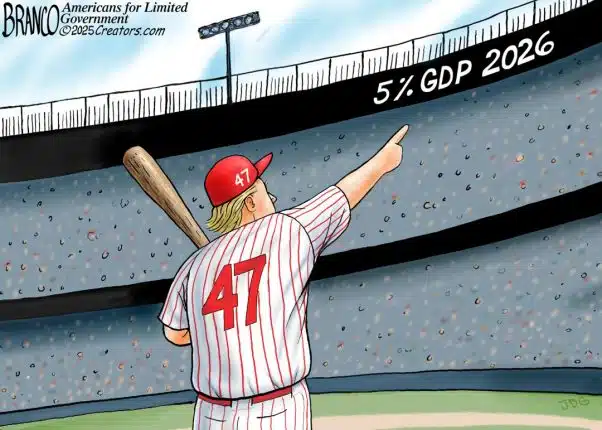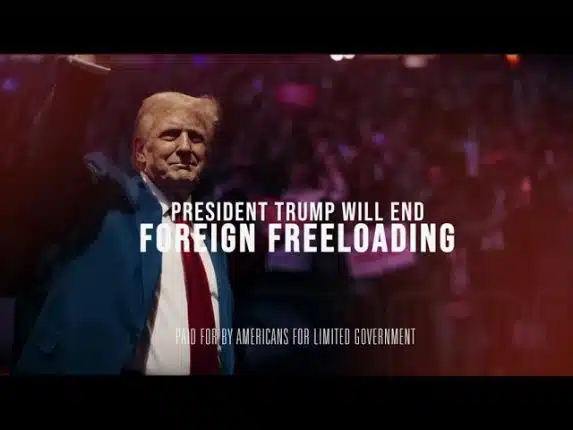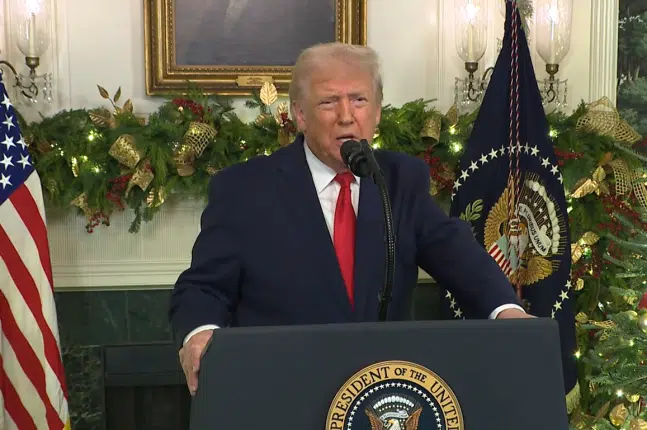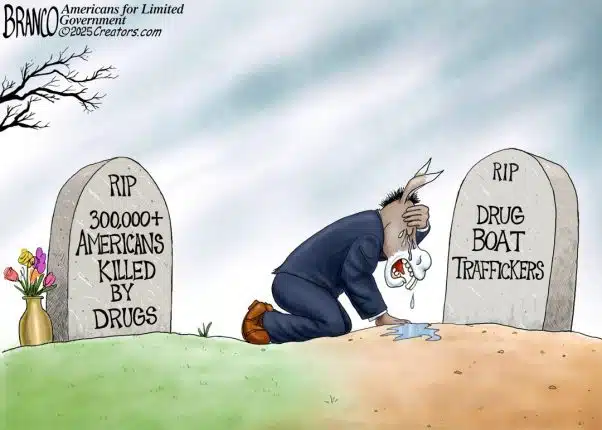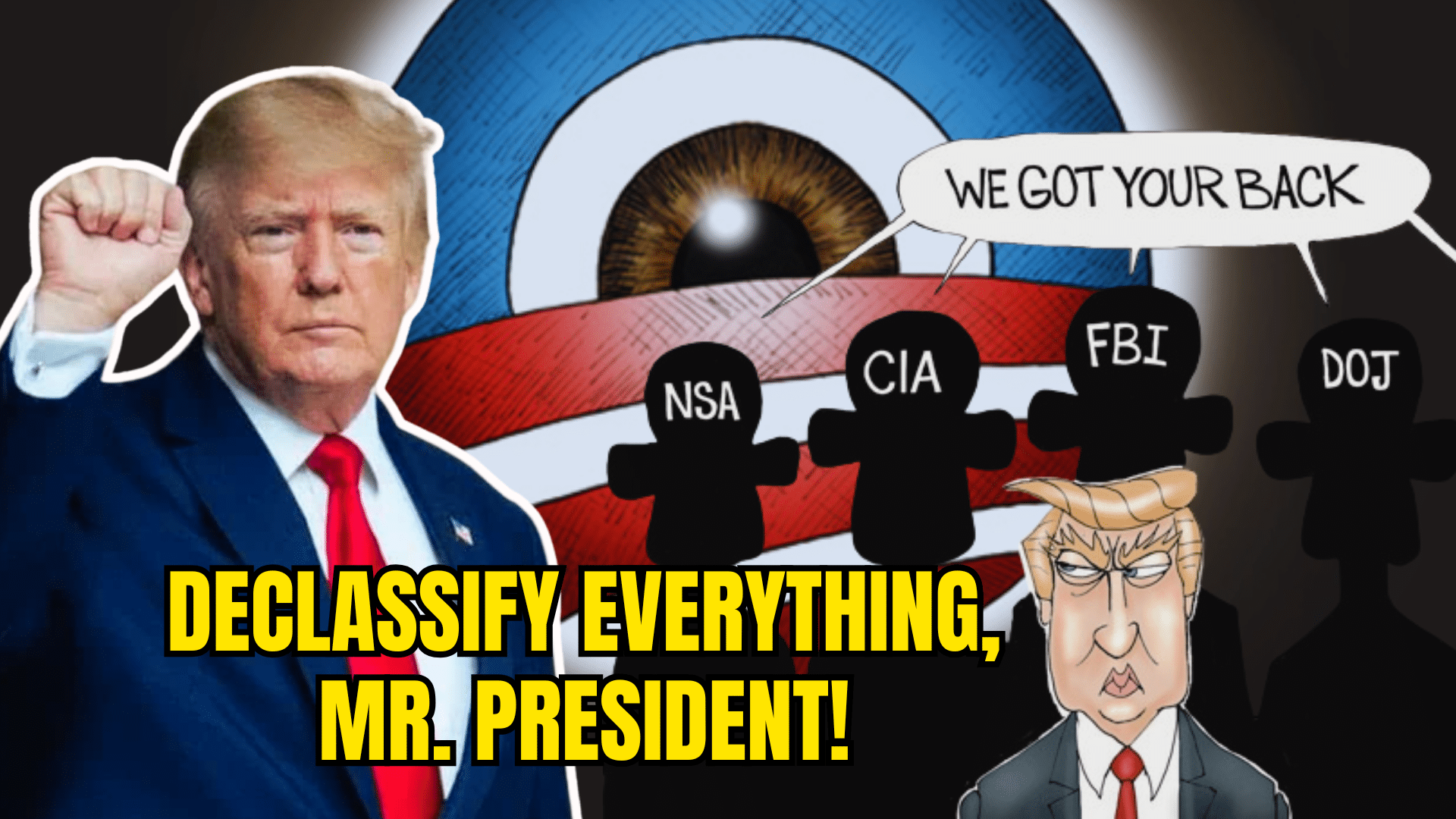
After President Donald Trump defeated Hillary Clinton in the 2016 election, then-President Barack Obama directed U.S. intelligence agencies to produce a new intelligence assessment of Russian activities interfering with the 2016 election that would ultimately conclude that Russia had been trying to help Trump get elected, a new memorandum from Director of National Intelligence Tulsi Gabbard shows.
The January 2017 assessment differed from pre-election assessments produced by the intelligence community that “foreign adversaries do not have and will probably not obtain the capabilities to successfully execute widespread and undetected cyber attacks on the diverse set of information technologies and infrastructures used to support the November 2016 U.S. presidential election.”
And that Russia’s intent with regards to the election was unclear as the lead author of the presidential daily briefing stated: “Russia is probably not (and will not) trying to influence the election by using cyber means to manipulate computer-enabled election infrastructure”
After a Dec. 9, 2016 meeting of White House Cabinet and National Security Council officials, at Obama’s direction, the intelligence assessment published in January 2017 then incorporated erroneous, fabricated findings paid for by the Hillary Clinton campaign and Democratic National Committee and produced by former British spy Christopher Steele that the Trump campaign had conspired with Moscow to hack the DNC and John Podesta emails and put them onto Wikileaks.
Inclusion of the Steele dossier dramatically altered the January 2017 assessment, which stated, “We assess Russian President Vladimir Putin ordered an influence campaign in 2016 aimed at the US presidential election. Russia’s goals were to undermine public faith in the US democratic process, denigrate Secretary Clinton, and harm her electability and potential presidency. We further assess Putin and the Russian Government developed a clear preference for President-elect Trump. We have high confidence in these judgments… We also assess Putin and the Russian Government aspired to help President-elect Trump’s election chances when possible by discrediting Secretary Clinton and publicly contrasting her unfavorably to him.”
This was based on the Steele dossier’s principal findings “a well-developed conspiracy of co-operation” between then-candidate Donald Trump and Russia, and that starting in July 2016, “This was managed on the TRUMP side by the Republican candidate’s campaign manager, Paul MANAFORT, who was using foreign policy advisor, Carter PAGE, and others as intermediaries. The two sides had a mutual interest in defeating Democratic presidential candidate Hillary CLINTON, whom President PUTIN apparently both hated and feared… Inter alia, Source E, acknowledged that the Russian regime had been behind the recent leak of embarrassing e-mail messages, emanating from the Democratic National Committee (DNC), to the WikiLeaks platform. The reason for using WikiLeaks was ‘plausible deniability’ and the operation had been conducted with the full knowledge and support of TRUMP and senior members of his campaign team.”
Unfortunately, the FBI did not begin the process of validating information from Steele until Jan. 2017 when it began interviewing Steele’s sources, months after spying warrants in October 2016 had already been obtained on the campaign and renewed after the election according to the December 2019 Justice Department report by Inspector General Michael Horowitz on abuses under the Foreign Intelligence Surveillance Act (FISA) that occurred in 2016.
In fact, no efforts were made to contact Steele’s sources prior to obtaining the spying warrants until after the election and after the surveillance had already been renewed once in January 2017 after the election. They just took it all on faith.
According to the inspector general report, once the main source that Steele used was contacted, “the Primary Sub-source made statements during his/her January 2017 FBI interview that were inconsistent with multiple sections of the Steele reports, including some that were relied upon in the FISA applications. Among other things, regarding the allegations attributed to Person 1, the Primary Sub-source’s account of these communications, if true, was not consistent with and, in fact, contradicted the allegations of a ‘well-developed conspiracy’…”
And yet, per Horowitz, the FBI’s “receipt of Steele’s election reporting on September 19, 2016 played a central and essential role in the FBI’s and Department’s decision to seek the FISA order.” Without Steele, they had nothing. And without his sources, he had nothing.
The only official who appeared to raise any questions was then-National Security Division Deputy Assistant Attorney General Stuart Evans, who held up the FISA application because it had come to light that Steele and Fusion GPS had been hired by the Democratic National Committee (DNC) and the Hillary Clinton campaign. Evans fought and had included in the FISA warrant application a footnote pointing out the probable political origins and motivations of the Steele dossier.
Evans told the inspector general that if the sub-source’s contradictions had been brought to the National Security Division’s attention, it could have been cause to cancel any further renewals of the FISA application.
Per Horowitz, “According to Evans, had OI been made aware of the information, such discussions might have included the possibility of foregoing the renewal request altogether, at least until the FBI reconciled the differences between Steele’s account and the Primary Sub-source’s account to the satisfaction of OI.”
Instead, they covered it up: “However, we found no evidence that the Crossfire Hurricane team ever considered whether any of the inconsistencies warranted reconsideration of the FBI’s assessment of the reliability of the Steele reports or notice to OI before the subsequent renewal applications were filed. Instead, the second and third renewal applications provided no substantive information concerning the Primary Sub-source’s interview…”
And made it sound like the sub-source had substantiated Steele when he had contradicted Steele, with the FBI “offer[ing] only a brief conclusory statement that the FBI met with the Primary Sub-source ‘[i]n an effort to further corroborate Steele’s reporting’ and found the Primary Sub-source to be ‘truthful and cooperative.’ We believe that including this statement, without also informing OI and the court that the Primary Subsource’s account of events contradicted key assertions in Steele’s reporting, left a misimpression that the Primary Sub-source had corroborated the Steele reporting.”
But Steele’s source had not corroborated the reporting that had found their way into the FISA application.
But when the FBI interviewed the sub-source its summary stated, per the Horowitz report, “[the Primary Sub-source] did not recall any discussion or mention of Wiki[L]eaks.”
On President Trump’s alleged activities at the Ritz Carlton hotel, that was just a rumor: “the Primary Sub-source told the FBI that, while Report 80 stated that Trump’s alleged sexual activities at the Ritz Carlton hotel in Moscow had been ‘confirmed’ by a senior, western staff member at the hotel, the Primary Sub-source explained that he/she reported to Steele that Trump’s alleged unorthodox sexual activity at the Ritz Carlton hotel was ‘rumor and speculation’ and that he/she had not been able to confirm the story.”
On details about Trump foreign policy advisor Carter Page being offered a stake in Rosneft worth billions, those were apparently made up: “a meeting allegedly held between Carter Page and Igor Sechin, the President of Rosneft, a Russian energy conglomerate. Report 134 stated that, according to a ‘close associate’ of Sechin, Sechin offered ‘PAGE/TRUMP’s associates the brokerage of up to a 19 percent (privatized) stake in Rosneft’ in return for the lifting of sanctions against the company. The Primary Sub-source told the FBI that one of his/ her subsources furnished information for that part of Report 134 through a text message, but said that the sub-source never stated that Sechin had offered a brokerage interest to Page. We reviewed the texts and did not find any discussion of a bribe, whether as an interest in Rosneft itself or a ‘brokerage.’”
Steele had also alleged that former Trump attorney Michael Cohen had traveled to Prague in the summer of 2016 to mop up the supposed fallout of the Trump-Russia DNC hack conspiracy. Here, too, the FBI ultimately debunked that allegation, too. Per Horowitz, “the FBI determined that some of the allegations in the Steele reporting, including that Trump attorney Michael Cohen had traveled to Prague in late summer 2016 to meet with Kremlin representatives and that ‘anti-Clinton hackers’ had been paid by the ‘[Trump] team’ and Kremlin, were not true.”
In March 2017, when the FBI returned to question the primary sub-source again, it again undercut the veracity of Steele’s reporting: “the Primary Sub-source felt that the tenor of Steele’s reports was far more ‘conclusive’ than was justified. The Primary Subsource also stated that he/she never expected Steele to put the Primary Subsource’s statements in reports or present them as facts. According to WFO Agent 1, the Primary Sub-source said he/ she made it clear to Steele that he/she had no proof to support the statements from his/her sub-sources and that ‘it was just talk.’”
It gets better. In March the primary sub-source admitted it was all hearsay: “the Primary Sub-source explained that his/her information came from ‘word of mouth and hearsay;’ ‘conversation that [he/she] had with friends over beers;’ and that some of the information, such as allegations about Trump’s sexual activities, were statements he/she heard made in ‘jest.’ The Primary Sub-source also told WFO Agent 1 that he/she believed that the other sub-sources exaggerated their access to information and the relevance of that information to his/her requests. The Primary Sub-source told WFO Agent 1 that he/she ‘takes what [sub-sources] tell [him/ her] with ‘a grain of salt.’’”
We already knew Steele had not been to Russia and that he had relied on a network of sub-sources. Per Horowitz, now we know that the primary sub-source had sub-sources, and not even they had access to the persons being reported on: “the Primary Sub-source stated to WFO Agent 1 that, in contrast to the impression left from the election reports, his/her sub-sources did not have direct access to the persons they were reporting on. Instead, the Primary Sub-source told WFO Agent 1 that their information was ‘from someone else who may have had access.’”
Steele said his sources were Russian, but they were not named: Source A was a “former top Russian intelligence officer”; Source B was a “senior Russian Foreign Ministry figure”; Source C was a “senior Russian financial official”; Source D was a “close associate of Trump” (golden showers source); Source E was an “ethnic Russian close associate” of Trump (golden showers source); Source F was a “female staffer of the hotel”; and source G was a “senior Kremlin official”.
Now we know, based on Steele’s primary sub-source, that they were not sources at all.
Even Steele would cast doubt on his primary source, calling him to FBI agents a “boaster,” an “egoist” and “may engage in some embellishment.” Yet, this information too was kept out of the FISA application.
None of the President’s chief accusers stood by the allegations when questioned. So why did the Justice Department do so for so long?
In court testimony, Steele said “all material contained this risk” of being disinformation, stating that the allegations needed to be “further corroborated and verified.”
Former FBI Director James Comey testified in Jan. 2017 that the information Steele provided was “salacious and unverfified.”
The Horowitz report had followed the July 2019 report by Special Counsel Robert Mueller, his own investigation beginning in 2017,
Eventually, Special Counsel Robert Mueller debunked the entire conspiracy theory. From the Mueller report: “[T]he investigation did not establish that members of the Trump Campaign conspired or coordinated with the Russian government in its election interference activities,” and “the evidence does not establish that the President was involved in an underlying crime related to Russian election interference.”
That included all members of campaign. Per Mueller, “the Office did not find evidence likely to prove beyond a reasonable doubt that Campaign officials such as Paul Manafort, George Papadopoulos, and Carter Page acted as agents of the Russian government — or at its direction, control or request — during the relevant time period.” As for former Trump attorney Michael Cohen, per Mueller, “Cohen had never traveled to Prague…” which discredited a key allegation from the Steele dossier.
In fact, the problems to do with the Steele reporting on Cohen were known as early as Jan. 2017 when Buzzfeed published the dossier and Cohen showed his passport saying he had never been to the Czech Republic.
And even after the exculpatory information was widely known in the Department’s top leadership, the Department conspired to conceal that information from the FISA Court. Per Horowitz: “the second and third renewal applications provided no substantive information concerning the Primary Sub-source’s interview,” when the key witness on behalf of the government of at this point criminal wrongdoing was directly contradicting the facts the government was purporting in a court of law.
They kept that away from a federal judge.
And Mueller managed to keep that out of his final report.
By 2023, Special Counsel John Durham has finished his own report outlining the Justice Department, State Department, intelligence agencies and FBI’s “confirmation bias” that led to a years-long investigation of former President Donald Trump’s 2016 presidential campaign, transition and then administration falsely alleging that Trump and his campaign were Russian agents who had helped Moscow hack the Democratic National Committee (DNC) and put their emails onto Wikileaks despite the fact that the FBI could not “corroborate a single substantive allegation in the [Christopher] Steele dossier reporting,” which was sourced to the Hillary Clinton campaign and the DNC.
Particularly troubling was the fact that U.S. intelligence had obtained a Russian intelligence analysis that directly laid out a Clinton campaign plan to tie Trump to Russia that was shielded from investigators. It was potentially exculpatory, but it was not on the FBI’s radar. Because they weren’t allowed to see it.
According to Durham, the intelligence was obtained in July 2016: “In late July 2016, U.S. intelligence agencies obtained insight into Russian intelligence analysis alleging that U.S Presidential candidate Hillary Clinton had approved a campaign plan to stir up a scandal against U.S. Presidential candidate Donald Trump by tying him to Putin and the Russians’ hacking of the Democratic National Committee.”
Durham added, “The IC does not know the accuracy of this allegation or the extent to which the Russian intelligence analysis may reflect exaggeration or fabrication.” It turns out the reason for that is because nobody investigated it.
Per Durham, “The Office showed portions of the Clinton Plan intelligence to a number of individuals who were actively involved in the Crossfire Hurricane investigation. Most advised they had never seen the intelligence before, and some expressed surprise and dismay upon learning of it. For example, the original Supervisory Special Agent on the Crossfire Hurricane investigation, Supervisory Special Agent-1, reviewed the intelligence during one of his interviews with the Office. After reading it, Supervisory Special Agent-I became visibly upset and emotional, left the interview room with his counsel, and subsequently returned to state emphatically that he had never been apprised of the Clinton Plan intelligence and had never seen the aforementioned Referral Memo.”
Durham added, “Supervisory Special Agent-1 expressed a sense of betrayal that no one had informed him of the intelligence. When the Office cautioned Supervisory Special Agent-1 that we had not verified or corroborated the accuracy of the intelligence and its assertions regarding the Clinton campaign, Supervisory Special Agent-I responded firmly that regardless of whether its contents were true, he should have been informed of it.”
Of those who did see the intelligence, they didn’t care. Per Durham, “The Office located no evidence that in conducting the Crossfire Hurricane investigation the FBI considered whether and how the Clinton Plan intelligence might impact the investigation. No FBI personnel who were interviewed by the Office recalled Crossfire Hurricane personnel taking any action to vet the Clinton Plan intelligence. For example, [FBI supervisory intelligence analyst] Brian Auten stated that he could not recall anything that the FBI did to analyze, or otherwise consider the Clinton Plan intelligence, stating that it was ‘just one data point.’”
The Justice Department and the FBI had intelligence that suggested that the Clinton campaign not only directly responsible for the Trump-Russia allegations, a fact which was later verified, but that they had been responsible for concocting it. The Clinton campaign and the DNC via law firm Perkins Coie had hired Fusion GPS, who in turn hired former British spy Christopher Steele to produce the allegations that there was a “well-developed conspiracy” by Russia and the Trump campaign to hack the DNC and give their emails to Wikileaks.
It was even known at the time, because parts of the sourcing were included in the original Carter Page Foreign Intelligence Surveillance Act (FISA) warrant of October 2016, which told the FISA Court that it started as opposition research by “a U.S.-based law firm” and was “likely looking for information that could be used to discredit Candidate #1’s campaign.” So, the FISA Court knew that it was potentially a political hit job and rubber stamped the FISA warrant anyway.
The section stated in full: “Source #1, who now owns a foreign business/financial intelligence firm, was approached by an identified U.S. person, who indicated to Source #1 that a U.S.-based law firm had hired the identified U.S. person to conduct research regarding Candidate #1’s ties to Russia (the identified U.S. person and Source #1 have a long-standing business relationship). The identified U.S. person hired Source #1 to conduct this research into Candidate #1’s ties to Russia. The FBI speculates that the identified U.S. person was likely looking for information that could be used to discredit Candidate #1’s campaign.”
The Horowitz and Durham reports discrediting the Steele dossier’s use by the Justice Department have already been on the record for years. What is new with the Director Gabbard’s new declassified releases is how the intelligence was altered behind the scenes by including the Steele dossier.
Interestingly, the new disclosures, for the moment, do not appear to really overturn the idea that Russia hacked the DNC and Podesta emails and put them on Wikileaks. For example a December 7, 2016 assessment that pinned the hacks on Russia: “The US Intelligence Community has high confidence in its attribution of the intrusions into the Democratic National Committee (DNC) and the Democratic Congressional Campaign Committee (DCCC) networks, based on the forensic evidence identified by a private cyber-firm and the IC’s review and understanding of cyber activities by the Russian Government. Most IC agencies assess with moderate confidence that Russian services probably orchestrated at least some of the disclosures of US political information. Our level of confidence is based on the timing and that Russian intelligence was in possession of leaked information from both the DNC and DCCC as was subsequently leaked by Guccifer 2.0, the WikiLeaks website, and the DCLeaks website. In addition, the disclosures of White House e-mails by the DCLeaks website appear to be consistent with the tactics and motivations of the Russian Government.”
Nor does it appear to overturn Special Counsel Mueller’s July 13, 2018 indictment of several Russians said to be GRU intelligence operatives who Mueller alleges hacked the Democratic National Committee (DNC), the Democratic Congressional Campaign Committee (DCCC) and Clinton campaign chairman John Podesta and gave the emails to Wikileaks to be published.
According to the Mueller indictment, “Between on or about May 25, 2016 and June 1, 2016, the Conspirators hacked the DNC Microsoft Exchange Server and stole thousands of emails from the work accounts of DNC employees.”
The indictment also alleges that Wikileaks, cited as “Organization 1” in the document, reached out to the hackers, posing as Guccifer 2.0, to get those emails: “On or about June 22, 2016, Organization 1 sent a private message to Guccifer 2.0 to ‘[s]end any new material [stolen from the DNC] here for us to review and it will have a much higher impact than what you are doing.’” Also, the indictment alleges that Guccifer 2.0 did not send the documents until July 14, 2016.
On June 15, 2016, seven days prior to Wikileaks allegedly contacting Guccifer 2.0, the WordPress blog by Guccifer 2.0 appeared, taking credit for the DNC hack, and saying everything had already been given to Wikileaks. Guccifer 2.0 claimed, “The main part of the papers, thousands of files and mails, I gave to Wikileaks. They will publish them soon.”
That had come just one day after, the Washington Post had published its story on the DNC hack by Russia, on June 14, 2016.
Which came two days after Wikileaks founder Julian Assange appeared to claim to already have the emails. On June 12, 2016, Assange told ITV in an interview that “We have upcoming leaks in relation to Hillary Clinton, which is great, Wikileaks has a very big year ahead… We have emails related to Hillary Clinton which are pending publication, that is correct.”
In an interview on Sean Hannity’s radio program on Dec. 15, 2016, Wikileaks’ Assange called the accusations that Russia was behind its disclosures a “deliberate attempt to conflate” its own releases and the presence of Russian hacking the DNC, stating emphatically, “Our source is not the Russian government.”
Hannity specifically asked Assange about Guccifer 2.0 and DCleaks.com, and Assange said, “who’s behind these [sites], we don’t know.” Hannity explicitly asked if Assange knew them, and Assange said, “No.”
But Mueller was sure it was Russia, per the indictment: “On or about March 21, 2016, LUKASHEV, YERMAKOV, and their co-conspirators stole the contents of [John Podesta’s] email account, which consisted of over 50,000 emails.”
From the Gabbard memo: “There is still supporting evidence indicating the Russian government directed hacking of the DNC and DCCC.” But with a caveat: “ODNI and DHS suppress the above September intelligence findings in their press release that states with ‘confidence’ the Russian government directed the DNC and DCCC hacks… Their statement omitted the fact that the FBI and NSA had ‘low confidence’ in attributing the data leaks from these entities to Russia.”
It is unclear from the Gabbard report why the FBI and NSA had “low confidence” in Russia finding. There was something about the Crowdstrike assessment of the DNC and Podesta being directed by Russia that only inspired “low confidence” by FBI and NSA. What were the dissenting views?
There is still a lot to put together, with the Gabbard memo only beginning to scratch the surface. The predicate for the investigation was Russia allegedly hacking the DNC and Podesta emails.
The hoax was first the intelligence community and then the Justice Department attributing the hacks to a conspiracy between Trump and Russia via the Steele dossier, seen above, that was ultimately discredited by Mueller, Horowitz and Durham. How malicious was that? Clearly, the Steele dossier should have never been included in the October 2016 FISA warrant application and then the January 2017 intelligence assessment. How malicious was that? Did the principals know it was fake?
The memo makes a lot out of election infrastructure and vote counting not being impacted by hacking by Russia or anyone else, but that was never the central finding that was controversial in 2016, in my opinion. The entire scandal was around the DNC and Podesta email dumps on Wikileaks. There’s still more to be revealed, but to get there, President Trump still needs to declassify everything else. Stay tuned.
Robert Romano is the Executive Director of Americans for Limited Government Foundation.


